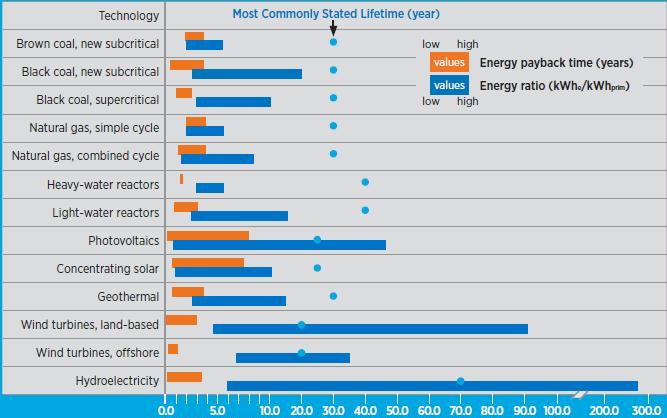In all attempts at reducing our environmental impact on the planet, there is a haunting question of whether it is worth it, or if the effort we've put in to do our bit is actually going to make things worse.
There's a scene in some World War Two movie where one Nazi turns to the other and asks, "are we the bad guys?" I often ask myself this question, and the answer is usually yes.
And so with solar panels, I wonder whether they really are making a difference to the planet, or if they are just another part of our plan to convert as much of the fossil fuels under the ground into carbon dioxide in the atmosphere as possible. If they are just leaves of garnish that have been grown with gallons of water and transported with gallons of oil to make our plates look a little greener.
Financially they seem to make sense. They're working for me everyday by just lying there in the sun on my roof, and I'm looking at a total payback of around 8 or 9 years.
There's also a sense of security that I have my own power source in case of emergencies. I know that they will only ever produce power in the day time, and if we were snowed under they wouldn't be very effective, but at least the sense of security is there. I'd be able to keep the fridge working on a sunny day.
But are they saving the planet, or are they just green bling? Are they like parsley on the side of the dieter's plate, next to the potatoes and the large piece of steak?
One metric that can shed light on this is EROI, the energy return on investment. We're familiar with financial returns on investment. For example, if I put 10,000 yen in the bank, with the 0.02% interest rate it will take three and half thousand years for the bank to pay me 10,000 yen in interest.
The energy return on investment tells us how many units of energy will come for every unit of energy we put in. For solar panels we need to consider how much energy was used in the manufacture and transportation of the panels, and their installation.
According to a review by the
Energy Skeptic of a report on Spain's experience with solar power, the energy return for solar there is low at 2.45. Optimists put it higher, and with improving technology it is increasing all the time. However, the mines digging the materials out of the ground are not solar powered, the factories making the panels may have a couple on the roof, but most of their electricity is coming in from the grid, and the transportation is mostly powered by fossil fuels. Research at Stanford claimed that
all historical energy used to make solar panels until now will be repaid between 2015 and 2020.
It's a different story to coal, which found an early use in steam pumps removing water from coal mines, and was instrumental in extraction of the energy source from the ground. Coal has a much higher EROI, around 18 according to meta-analyses by Mason Inman in Scientific American, retold
here.
Nuclear, meanwhile, is rated as low as 1 by some, and designated a sink of fossil fuels. The nuclear industry give it a score between 40 and 60 and claim it is a global-warming saviour. Politics is very much alive in these figures:
Hydro-electric 40+
Wind 20
Coal 18
"Natural" Gas 7
Solar 6
Nuclear 5
(Data from Scientific American cited in carbonbrief.org - I couldn't thoil the price Scientific American charge to read the original article.)
So they may be helping save the planet or they may be helping to destroy it. On the other hand, it may be that the panels will help to drive up fossil fuel prices and get us off them quicker. An interesting statistic from
wikipedia's article on EROI is that the energy return on investment for US oil and gas halved between 1970 and 2005. In other words, while solar power is becoming cheaper to produce, both in terms of money and energy, the more oil and gas we get out of the ground, the more energy we need to get what is left.
As a metaphor for this, you can imagine that someone has hidden several pennies around your house, and you're trying to find them. You'll find the first ones fairly quickly, but as you go on, they will take longer and longer to find. You may go and buy a metal detector, at which point the metaphor reveals that improvements in technique may speed up your retrieval rate. This will not help when there is nothing left to retrieve.
I remember at school hearing that fossil fuels were going to run out in thirty years. When I told my father this, he said that he had heard that when he was at school. My son is no doubt learning that same thing at his school. Fossil fuels are a finite resource, but they may not be exhausted. It's more likely that their cost will increase, while the cost of alternatives is decreasing.
And when the energy economics switch over so that fossil fuels are unviable, at least a lot of us will have panels on our roofs to produce electrical power, and keep our fridges running on sunny days when the roof is not covered with snow.


